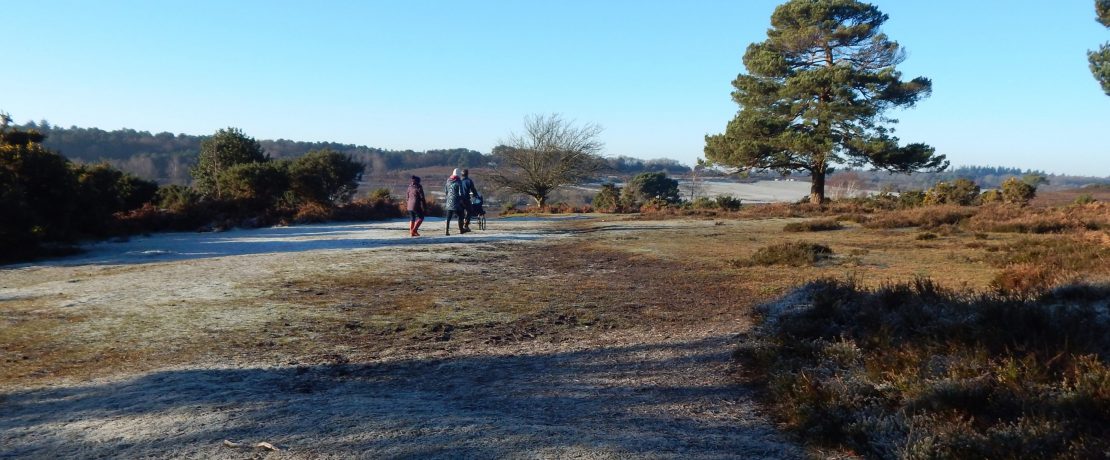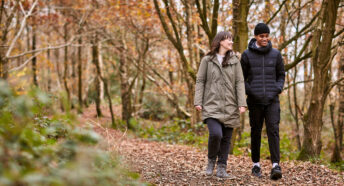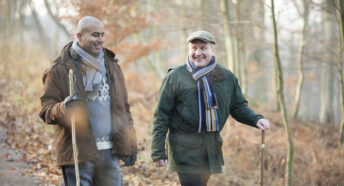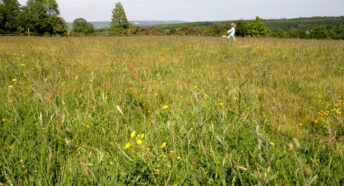On a winter walk: following the tree trail
We benefit from the trees around us, urban or rural, in all sorts of ways. But how well do you know your trees – especially in winter, when there are fewer leaves and fruit to give you clues? Here’s our spotter’s guide to wintry trees and how to identify them…
Out on a walk in countryside or town we often use trees either consciously or subconsciously to find our trail – they’re often the main visual clues at a distance that can help us navigate across open pasture or mark a turning. But which tree is which?
In winter, there’s not much to go on in terms of fruit or leaves unless you’re looking at an evergreen. But with a little detective work, you can still name your waymarker.
For starters, several of our common trees tend to grow into a distinct shape that will tell you when you’re on the right route. But remember: tree shapes often vary according to how old they are and what they’re growing near.
Elms for example might only start to spread once they are at a certain height, while an oak in crowded woods will grow higher and narrower than its counterpart in open fields. So sometimes you’ll need to look for more clues. This is where our spotter’s guide to tree shapes comes in.
Happy tree sleuthing!
Oak
The broad spread of that English oak silhouette must be the most well-known tree outline in this country, given it’s on lots of town and village flags and emblems.
A relatively short trunk before the branches start to spread creates a sort of kidney bean shape with the branches – it’s very recognisable in an open landscape or as a boundary marker. In woodland, its shape may not be so clear as it fights to reach the light alongside other trees. The rough grey trunk may give you a clue.
However, it’s time to take a look on the ground and see what you can spot. Scattered acorns and a few dry leaves with their familiar wiggly outline will tell you it’s an oak.
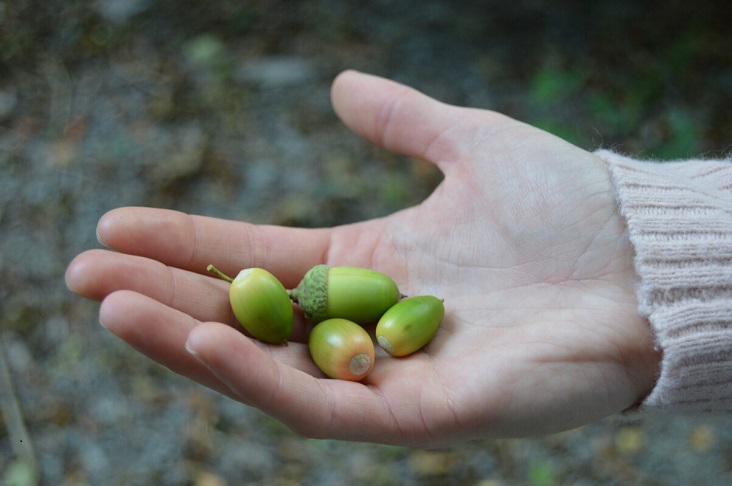
Beech
It’s likely that you’ll know when you see beech as they’re often together in woods of their own: they like to have their own space. And they make sure they get it, with their branches forming a dense canopy up above and thick fallen carpets of leaves that prevent much undergrowth.
Although you won’t get a feel of their shape in woodland, you can tell a beech by the smooth grey bark. Again, a peek at the forest floor will help – there will often beech nuts scattered on the ground if the local squirrels haven’t snaffled them.
If you can see the tree outline, beech has a broad dome, a bit like the oak (they come from the same tree family) but with softer, curvier branches. And they like to grow on chalky soils and are long-lived, so they are popular to plant as hilltop groves such as Wittenham Clumps in Oxfordshire and Frithsden Beeches in Hertfordshire.
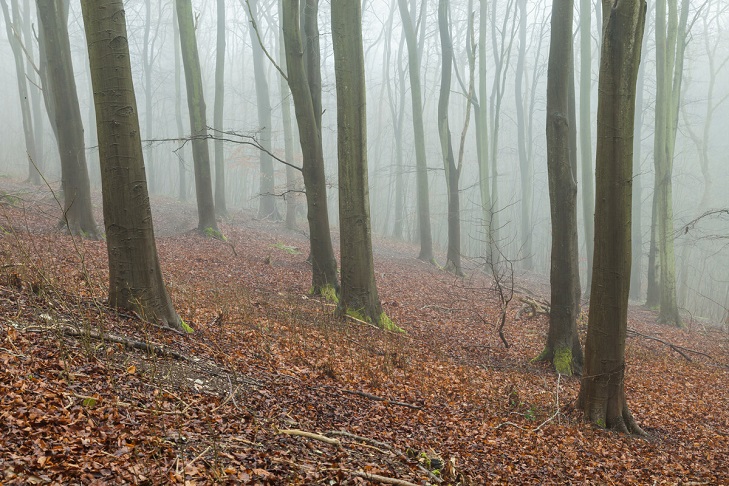
Common elm
The shape of the common elm used to be, as its name suggests, a well-known sight in many of our hedgerows – a relatively short trunk with a full round silhouette of branches. Once fully grown it often narrows slightly at the mid-point before fanning out as it reaches for the sky – but that sight is much rarer since Dutch elm disease decimated stocks in the 1970s.
The good news is that the common elm is starting to appear again, thanks to disease-resistant varieties. A longer trunk than oak, it has evenly spreading branches, though reaching high rather than wide. The bark tends to be grey when young and gets browner with age, developing deeper grooves as it does so.
Still not sure? Have a look at the twigs and base of the trunk. Elm often puts out suckers – new twigs from its base – and its twigs have fine little hairs on them whatever the time of year.
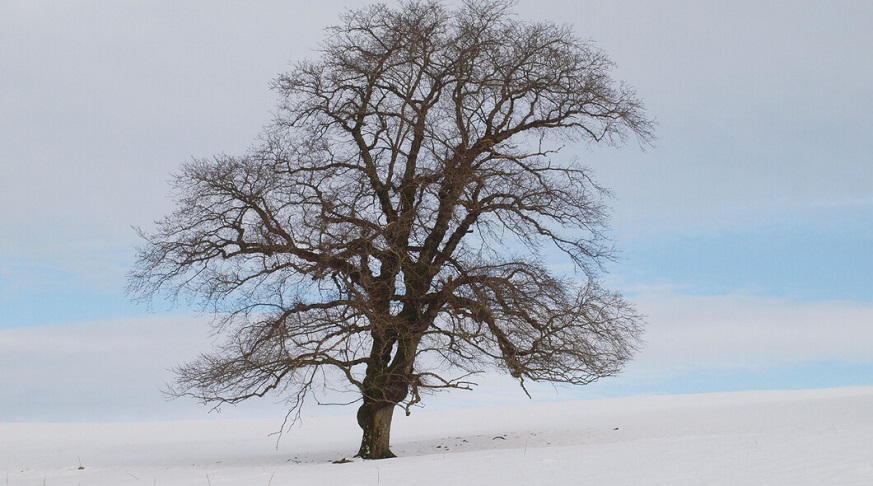
Silver birch
With its thin, light and open branches and peeling white trunk, the birch is an easy spot in our woodlands – it’s familiar to many of us from being widely used as a garden and street tree. It loves poorer, more acidic soils and exposed woodland, growing fast and high with open branches to form a narrow silhouette.
In autumn, its glowing yellow leaves lift a grey day. In the north, its close relative downy birch is common – but don’t be fooled; this one has a darker trunk, and likes soggier sites on higher land.
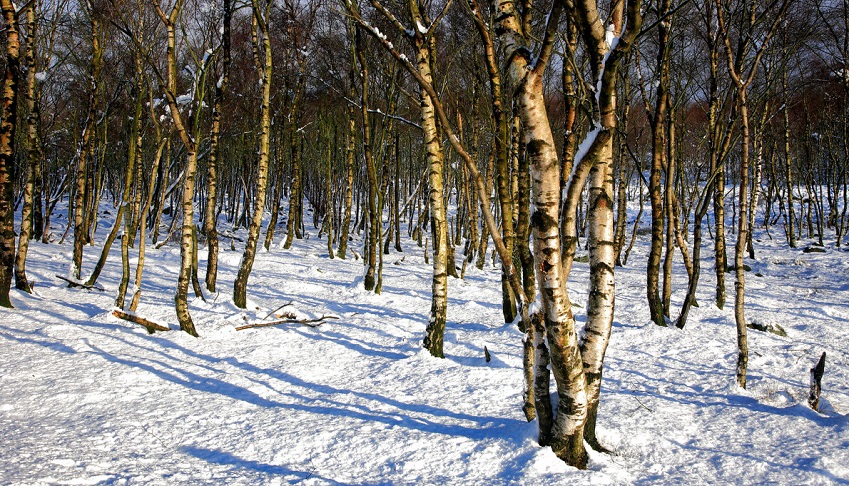
Rowan
Rowan’s alternative name of mountain ash might suggest you’ll only see it on higher ground, but it’s now a common street tree so might be a good guide if your walk is around town. Outside our cities, it’s often in woods or rough scrubby land and on light soils.
It’s a classic ‘tree shape’ that a child might draw and has a light grey, rough trunk. But the real clue that will clinch your case is that even once its regular, jagged-edged leaves have dropped, there are usually some bright orangey-red berries still to be seen glowing through the winter gloom.
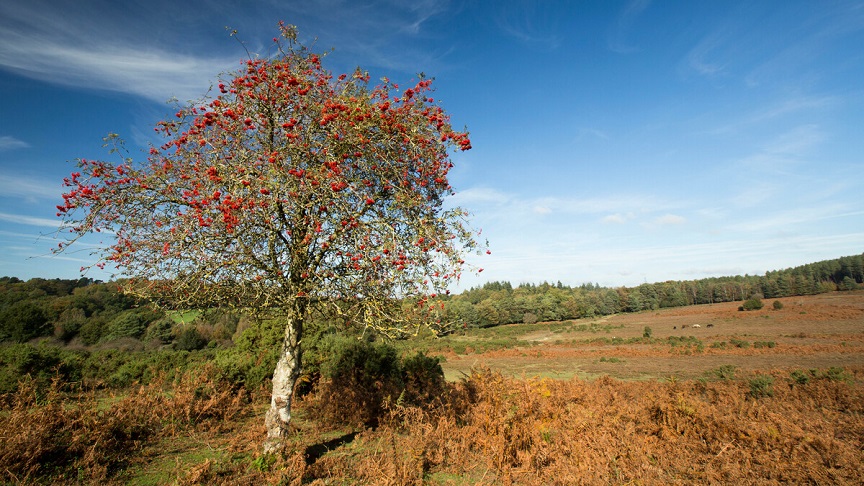
Dogwood
Colour is the clue with the last of the trees on our trail. With dogwood, or Cornus sanguinea, it’s not berries that’ll draw your attention, but the colour of new branches – the bright blood red that its Latin name suggests and is so obvious in the winter months, especially when they’re growing in full light. They tend to be a paler green in shady areas.
The common version is really a shrub but can grow to small tree height, often in hedges or at the edge of woods or pasture. Older dogwoods will have a grey bark with ridges that deepen as they get older.
Those red twigs grow straight and strong, so traditionally dogwood has been used for arrows and butchers’ skewers- dogs or ‘dags’ as they used to be called, hence the name.
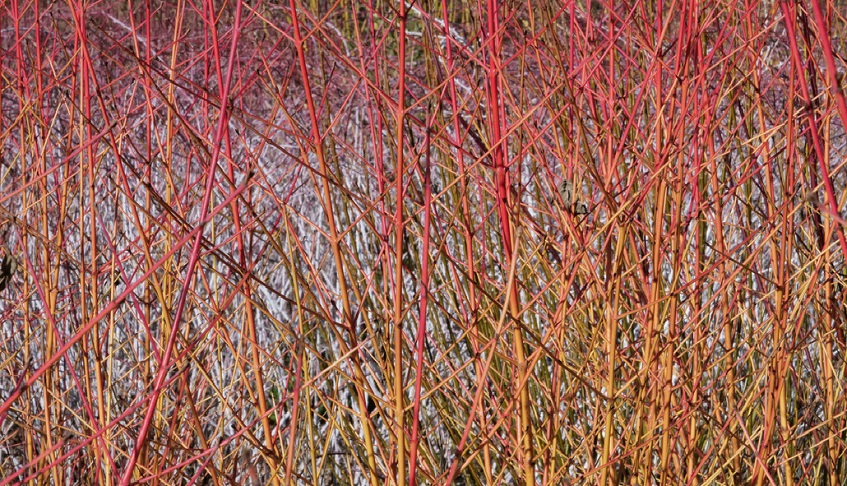
Still stuck? The Woodland Trust and the Wildlife Trusts have helpful guides, so get out and about to appreciate your local trees, no matter where you wander.
